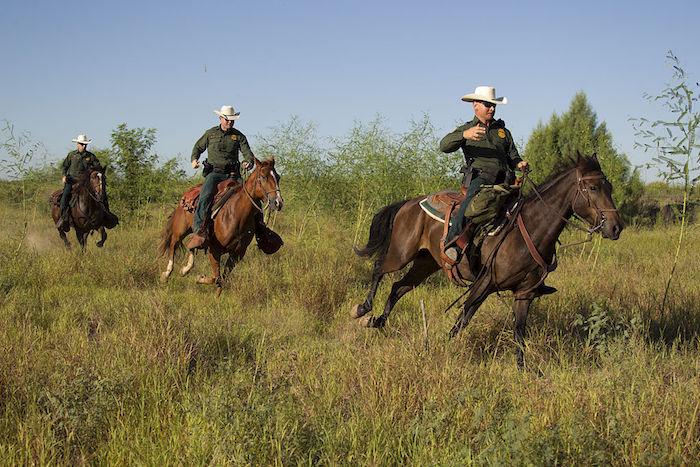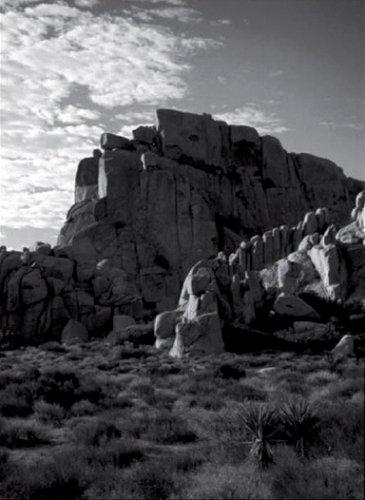
While Border Patrol agents patrol on horseback, ATV, 4WD trucks, via helicopters, and use drones to monitor the U.S. borders, a House subcommittee wants to determine whether environmental laws and regulations hamper their ability/U.S. Customs and Border Protection
Eight years after the U.S. Government Accountability Office concluded, after a year's study, that environmental laws were not hampering Border Patrol efforts, a House of Representatives subcommittee plans to revisit the matter.
The House Subcommittee on Oversight and Investigations, chaired by U.S. Rep. U.S. Rep. Bruce Westerman, R-Arkansas, will examine The Costs of Denying Border Patrol Access: Our Environment and Security on Thursday. No witness list or accompanying documents were listed on the committee notice last week.
Back in 2011, U.S. Rep. Rob Bishop, a Republican from Utah who today chairs the Natural Resources Committee that oversees the oversight subcommittee, introduced legislation to "prohibit the Secretaries of the Interior and Agriculture from taking action on public lands which impede border security on such lands."
The bill went nowhere. But as drafted, it would have exempted the Border Patrol from adhering to the National Environmental Policy Act, or the Wilderness Act, or the Endangered Species Act, or any number of other measures ranging from the Federal Water Pollution Control Act and the Clean Air Act to the Archaeological Resources Protection Act and the Coastal Zone Management Act.
And, in theory, if the measure had passed and been enacted the Border Patrol would not have to consult with the National Park Service before erecting towers, building fences, or cutting new roads for access into units of the National Park System that lie within a 100-mile-wide corridor along the country's borders -- the southern border with Mexico, the northern border with Canada, or the West or East coasts.
Rep. Bishop also had asked the Government Accountability Office to determine whether the various environmental and Park Service regulations impede the Border Patrol from securing the country's borders from terrorists, drug runners, and illegal immigrants.

Back in 2010, a Government Accountability Office report concluded that the rugged terrain in the Southwest, not environmental laws, was the greatest impediment to Border Patrol agents working to secure the U.S.-Mexico Border/BLM
In 2010, after a nearly year-long review, the GAO determined that while environmental regulations at times slowed Border Patrol operations in the Southwest, a strong majority of agents-in-charge "reported that the overall security status of their jurisdiction is not affected by land management laws."
A far greater problem, the agents-in-charge told the GAO investigators, is the lay of the land in the Southwest. And while "four patrol agents-in-charge reported that delays and restrictions negatively affected their ability to achieve or maintain operational control," the GAO reported, "they have either not requested resources to facilitate increased or timelier access or have had their requests denied by senior Border Patrol officials, who said that other needs were greater priorities for the station or sector."
A separate report released that year, Interagency Cooperation on U.S.-Mexico Border Wilderness Issues, written by Kirk Emerson, PhD, concluded that the Border Patrol was managing to work with land-management agencies under the existing regulatory framework to accomplish their tasks.
"After a slow start and much trial-and-error, cooperation among federal departments and agencies charged with protection of the border and wilderness areas has been improving in the past few years," added Ms. Emerson, a consultant based in Tucson, Arizona.
"Departmental leadership has issued several policy directives and put in place organizational mechanisms that have created a framework for collaboration and conflict resolution among the departments and their respective agencies on the ground."
Back in 2012, park superintendents told the Traveler that they had a good working relationship with the Border Patrol.
“My staff and I, we actually have a pretty good working relationship with the Border Patrol here," Chip Jenkins, then North Cascades National Park superintendent, said. "They are a constant presence in the park. They have a boat on Ross Lake, they are routinely patrolling through the campgrounds, they are routinely on the trails here. They’re on the highway.
“Our rangers meet with the Border Patrol as well as other agencies on a monthly basis to discuss and coordinate activities," Superintendent Jenkins went on. "We coordinate and cooperate when things are going on in the field and radio frequencies and what not. From my understanding from talking with the (Border Patrol) commander of the Blaine (Washington) sector, things are working. There’s not anything broken, at least we’ve not heard from the Border Patrol that they consider that things are not working.”
The same sentiment was expressed by Glacier National Park's superintendent at the time, Chas Cartwright.
More recently, Park Service staff at Organ Pipe Cactus National Monument told the Traveler that they worked very closely with the Border Patrol to help them gain as much access as they needed in the 517-square-mile park that hugs the U.S.-Mexico border.
With funding from Homeland Security, Organ Pipe Cactus staff and Border Patrol agents pored over maps of the national monument to decide which illegal travel routes gouged out of the landscape would remain, and which would be erased. Complicating the effort was the fact that 95 percent of the park is official wilderness. In theory, all of the routes should have been removed, but visitor safety dictated that some remain.
“In order to restore those routes, we had to work with Homeland Security because we don’t want to restore routes they need," said Brent Range, Organ Pipe Cactus's superintendent in April 2017 when Traveler visited the park. "We want them to have maximum access down here. We need for them to have the access. That keeps the park safer, cleaner for the visitor, for the resource, for the staff, for everybody that comes here.”
At the time Kevin Dahl, the National Parks Conservation Association's senior program manager in Arizona, called the effort "a success, and shows great inter-agency cooperation."
This past February 3 Reps. Bishop and Westerman spent time along the border and came home with concerns about its security.
“The security of the United States is our utmost priority,” said Rep. Westerman in a release. “Unfortunately, bureaucrats in Washington have made securing our southern border unnecessarily difficult, if not impossible. Environmental rules and regulations are ignored by drug smugglers, human traffickers, and others intent on harming Americans. Illegal border crossings through federally owned lands destroys vital endangered species’ habitat, increases erosion, and leaves behind mountains of trash and debris. Ironically, the very same burdensome regulations prevent the U.S. Border Patrol from executing its mission: stopping illegal crossings of our border. This visit was eye opening and will inform my work on the Subcommittee on Oversight and Investigations going forward.”
From his viewpoint, Rep. Bishop said, "“Our Border Patrol agents need access to federal lands in order to do their jobs. Under the status quo, that access is being denied. It is unacceptable when it can take months for federal law enforcement to get permission to fill cross-border drug tunnels or to repair an access route to apprehend human traffickers.”



Comments
My daughter was in law enforcement in Yuma, Arizona and a few years ago I met one of her associates. He was an Arizona Department of Public Safety officer who served as state liaison in an electronic monitoring control center located in Gila Bend.
He told me that it's actually EASIER to catch illegal border crossers in wilderness areas than on private lands along the border. He said that when their devices detect movement in a wilderness you can be certain it's probably something illegal. Thus, all they needed to do was monitor activity and wait until whoever it was came close to a road and then gather them up.
However, if activity was noted on private lands, it was more likely that it was a rancher feeding cows or spreading manure. They then wound up spending a lot of time discovering whether it was legal or not.
He said they estimated that, on wilderness they had a capture rate in the 90% range. On private lands it was likely less than 20%.
His suggestion was that if we really want to control our borders we need to confiscate private land and turn it all into wilderness.
Interesting perspective Lee. I'm not sure what kind of surveillance technology boarder patrol has but I wouldn't think it would be too hard to distinguish someone going about daily ranch chores vs making a run for the nearest pick up point unless all they can detect is movement and not what type of movement? Maybe a case for an upgrade in equipment?
Also pretty sad if the wilderness areas down there are now primarily inhabited by criminals.
While I'm always in favor of more wilderness I'm not a fan of the government taking private property except in very rare circumstances. It will be interesting to see if Trump gets his wall if that will mean confiscating some private property too.
What an absurd suggestion. All this can be stopped without a wall, without confiscation and without easing environmental regulations. No jobs, no healthcare, no school, no welfare, no driver licenses and the illegal immigrants will go/stay home. Saves (rather than spends) billions and gets rid of the problem.
I'm sure his comment was tongue-in-cheek, Esteemed Comrade. But it makes as much sense as anything currently being proposed to placate the extreme right wingers out there. After all, hasn't Donald started making noises about a "wall of technology" instead of a physical wall?
I like my wall of no benefits better.
Growing up I was always proud of the long international border with Canada, which was touted as the "longest undefended international border". It still is, in terms of military, although civilian law enforcement certainly takes a role. My folks were living in a bordercrossing town - Sumas - when I came along.
It is very difficult to stand back and not notice that the northern border, not such a hot topic with our current administration, is with a predominantly white nation, and the border the current administration is frothing about is with a brown nation.
Berlin also had a wall.
It is very difficult to stand back and not notice that the northern border, not such a hot topic with our current administration, is predominantly with a nation that is not flooding our borders with illegal entry, and the border the current administration is frothing about is with a nation that IS flooding our borders with illegal entry. It has nothing to do with color, unless you think color defines whether someone acts legally or illegally.
Rep. Bishop is always looking for ways to weaken our environmental protection laws, and his border bills are a Trojan horse towards this goal. He is pretending to address what has been already identified as largely a non-problem. I also took Lee's suggestion that border security would be enhanced, if we confiscate private property and designated it Wilderness, as tongue-in-cheek. In my own experience, I found that the Federal Land Management agencies work well with the U.S. Border Patrol.